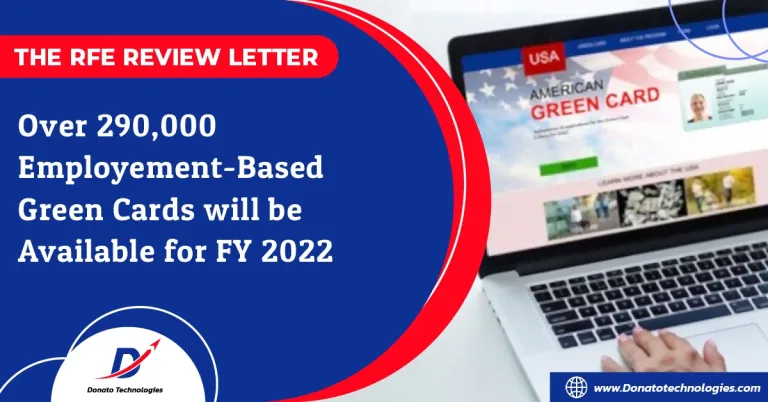Every normal year, there are 140,000 Employment-Based Green Cards available. However, 2020 was not a normal year, and over 150,000 relatives of US citizens and green card holders were unable to immigrate because US Embassies abroad were closed due to the pandemic. Every year, there is a 226,000 family-based green card quota. If this is not reached, these remaining number rolls over into employment-based green cards available for the following year. That means, starting October 1, 2021, there will be over 290,000 employment-based green cards available, more than doubling what is available in a normal year.
The family bucket being moved to the employment bucket for the Green Card, a very low number of family-based green cards were approved in Fiscal Year 2020. This resulted in being “rolled over” to the employment-based green card category in FY 2021, which means there will be over 290,000 employment-based green cards available starting October 1, 2021. The figures clearly show the double in numbers what is available in the normal year. According to USCIS, the recent data shows that there are approx. 273,000 green cards that are employment-based still pending as of March 31, 2021. This is a big thing for employers and foreign national’s employees. Employment-based green cardholders have the status of permanent residence. They can travel free anywhere in the United States with their family members.
The family bucket being moved to the employment bucket for the Green Card means a delay for family members who are eager to start life anew in America. There are many countries, where family-based visas are the main route to get permanent residence, including India-Americans, Mexico, the Philippines, etc. These countries are aggressive in sponsoring relatives to immigrate to the United States of America. Therefore, to apply if your employee or client meets the employment-based eligibility requirements, FY 2022 will be the best.
Employment-based green cards break down into five preference sections:
- United States Citizenship and Immigration Services (USCIS) defines EB-1 workers as those with, “extraordinary abilities in the sciences, arts, education, business, or athletics; outstanding professors and researchers; or Certain multinational managers and executives.
- EB-2 workers are professionals that work jobs that require attainment of a US Master’s degree or higher or its equivalent or have a National Interest Waiver, and EB-3 workers are skilled, unskilled, or other professionals.
- EB-4 and EB-5 are fewer common categories. EB-4 includes a variety of special immigrants, and EB-5 are immigrant investors.

